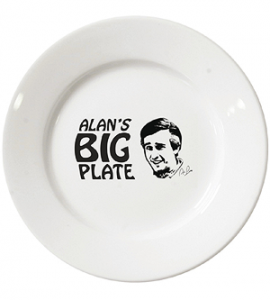Did you know, that in 1960, the average dinner plate was 9 inches in diameter, but in 2009 it grew to 12 inches? That is an increase of 80% in 49 years! Why is this, and what are the public health implications?
Why this has happened is not too clear, greater demand form more food perhaps? It is certainly clear that fast food portions have grown, which may put demand on home made portions to grow – we just don’t know for definite.
What we do know is that we as a species we are very good at finishing our portions. An interesting (and quite funny) experiment demonstrated this nicely:
 Never ending Soup!
Never ending Soup!
One group of participants were given a bowl of soup, and told that they could have more if they wanted, until they were full. Another group of participants were given a bowl of soup which was secretly filled from the bottom and asked to stop when they felt full. The group with the never ending soup bowl ate 73% more than the other group, and massively underestimated their calorie intake. At the end of the trial, both groups were asked to score how full they felt on a scale of 1-10, and, on average there was no difference in the scoring.
This shows that there is a link between the portion of food we are presented with and our satiety – generally we will feel full when all the food is gone.
So, larger portions, means more calories, and with modern diets, this means that you will gain weight – plain and simple.
But if you are concerned about your weight, then a simple answer if get a smaller dinner plate – your portions will decrease and you will be able to manage your weight better.

